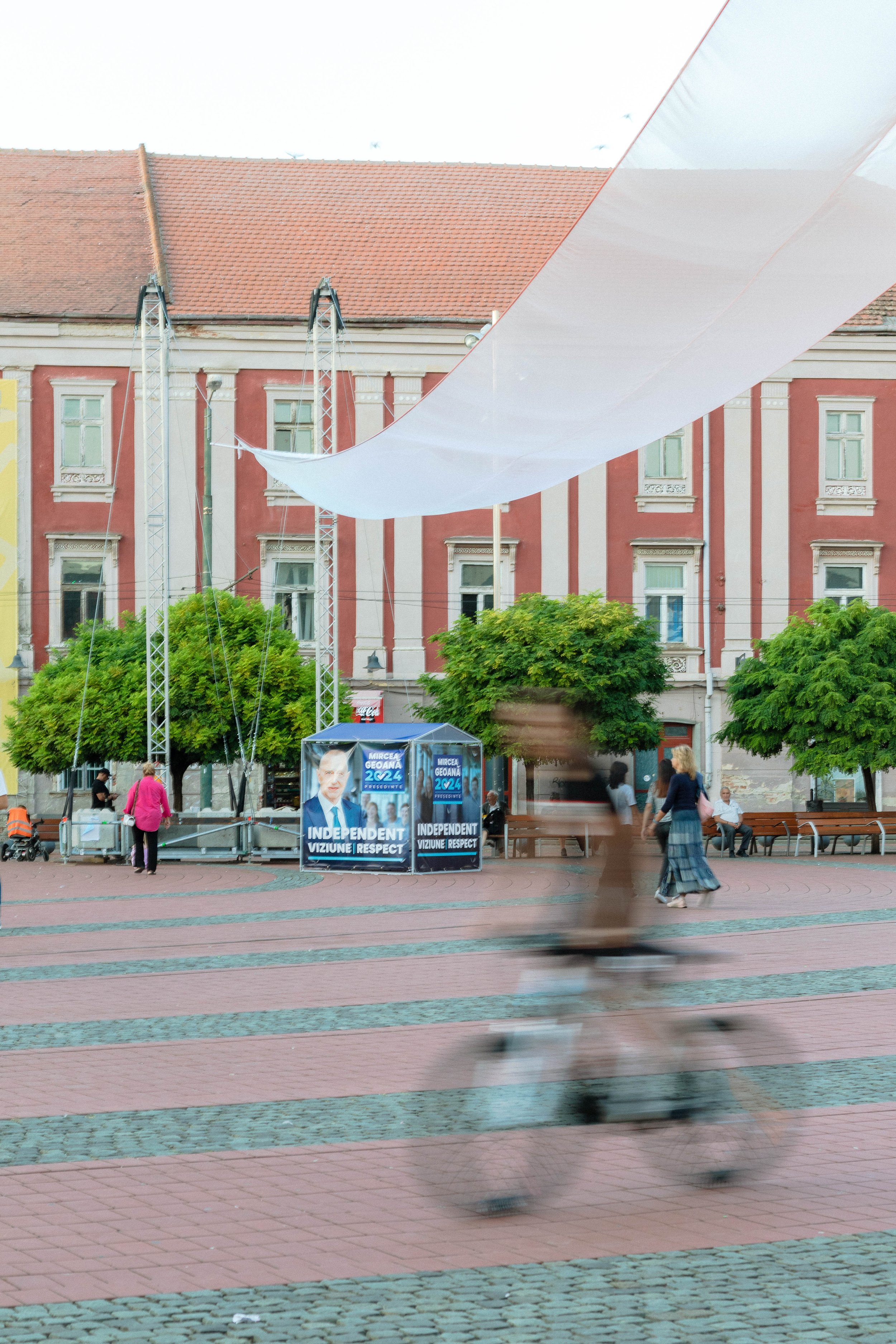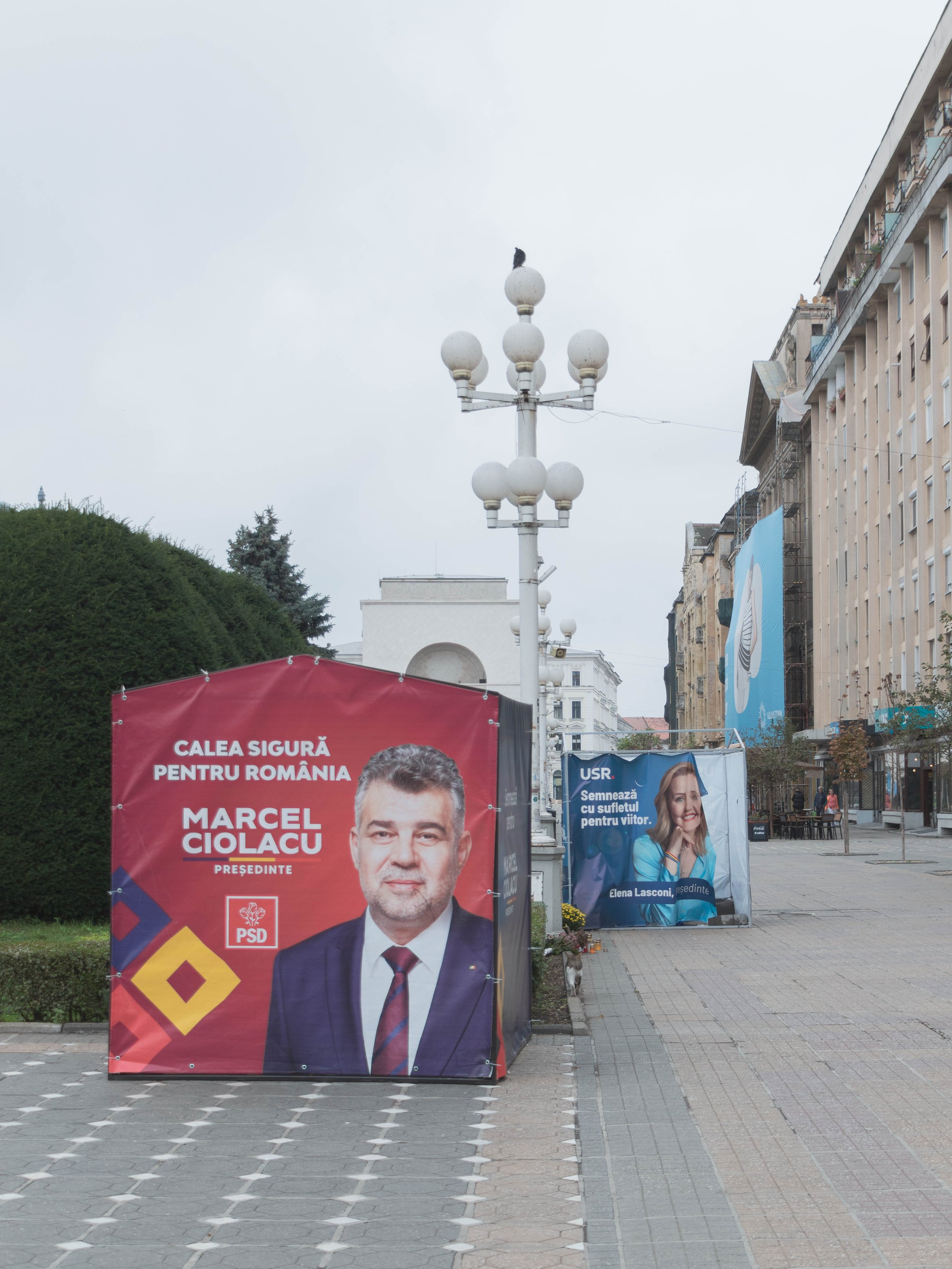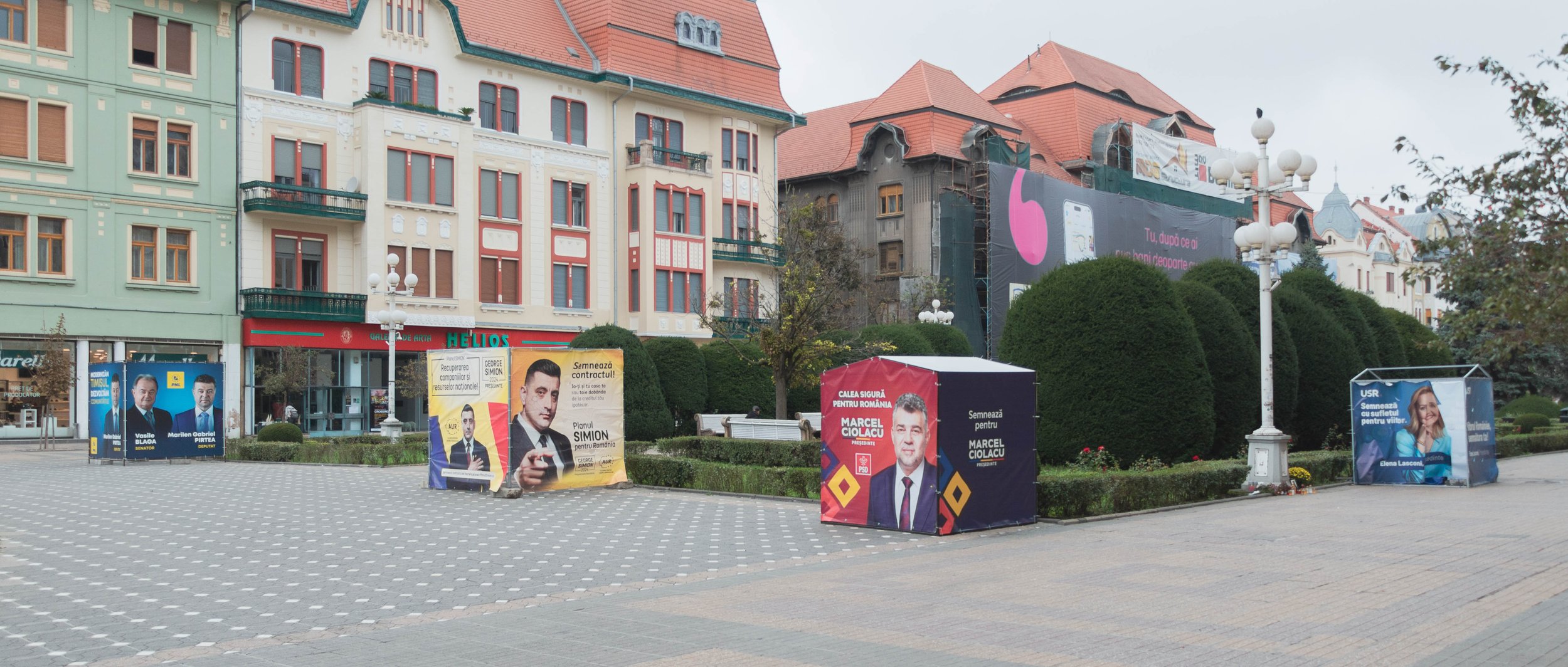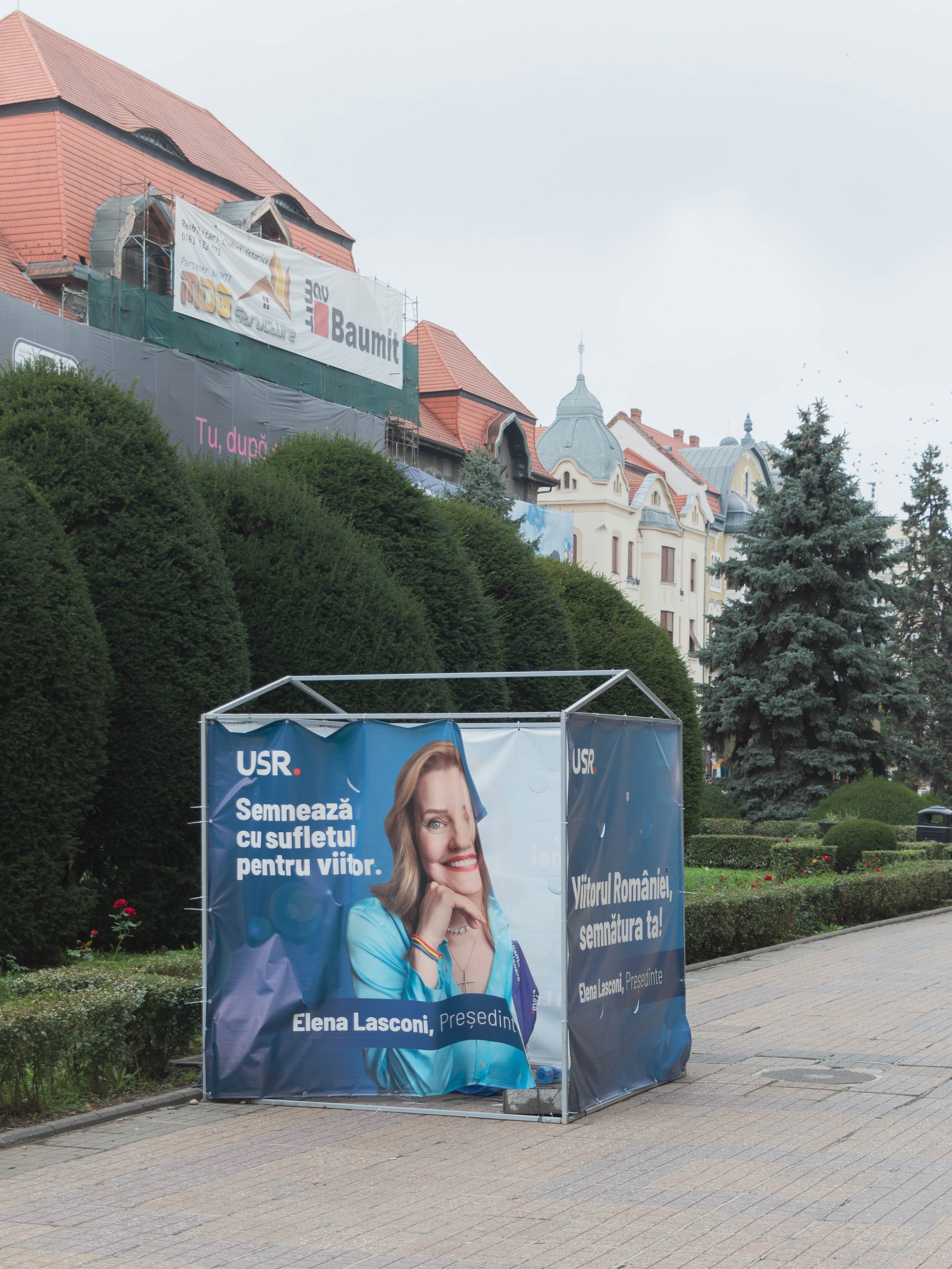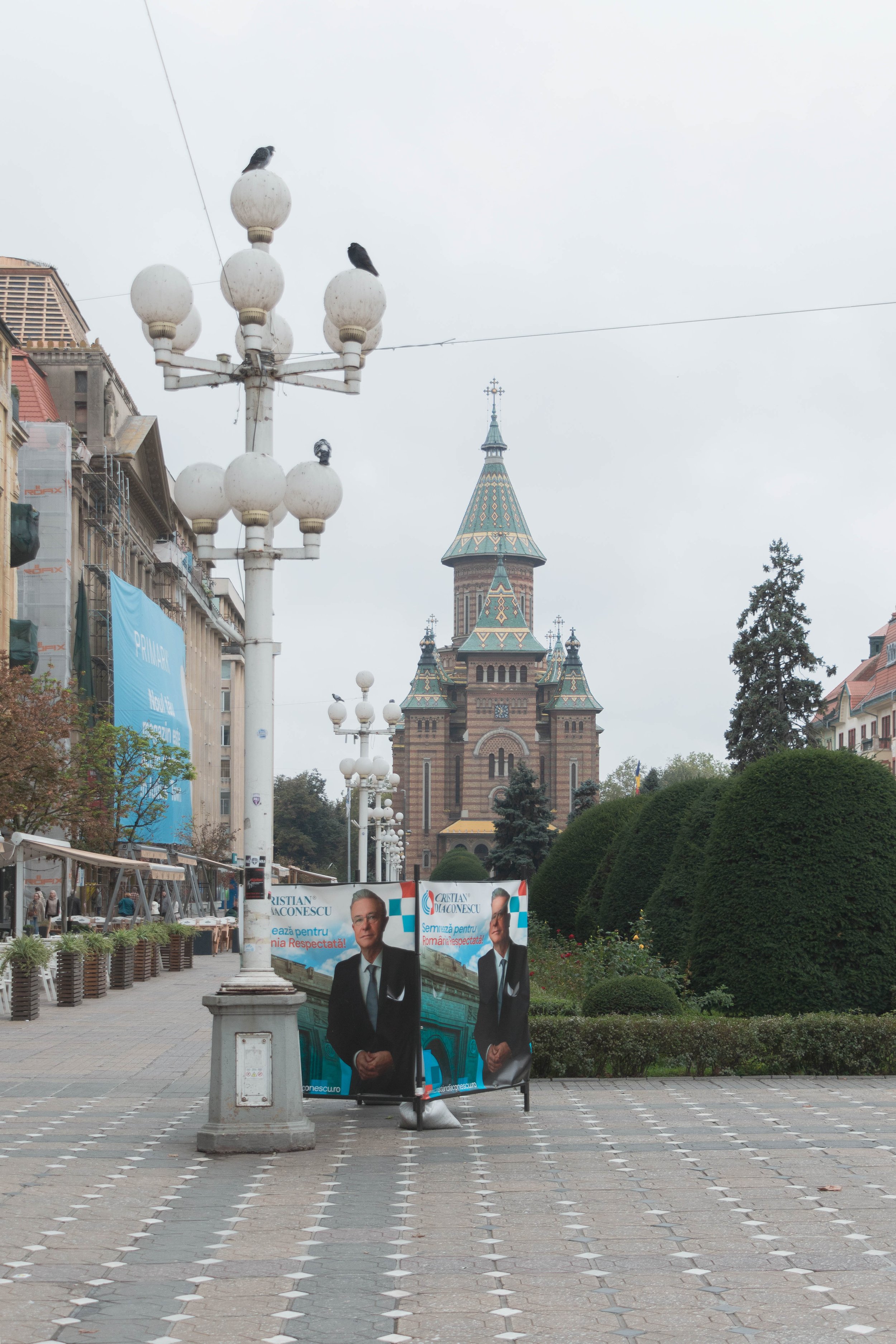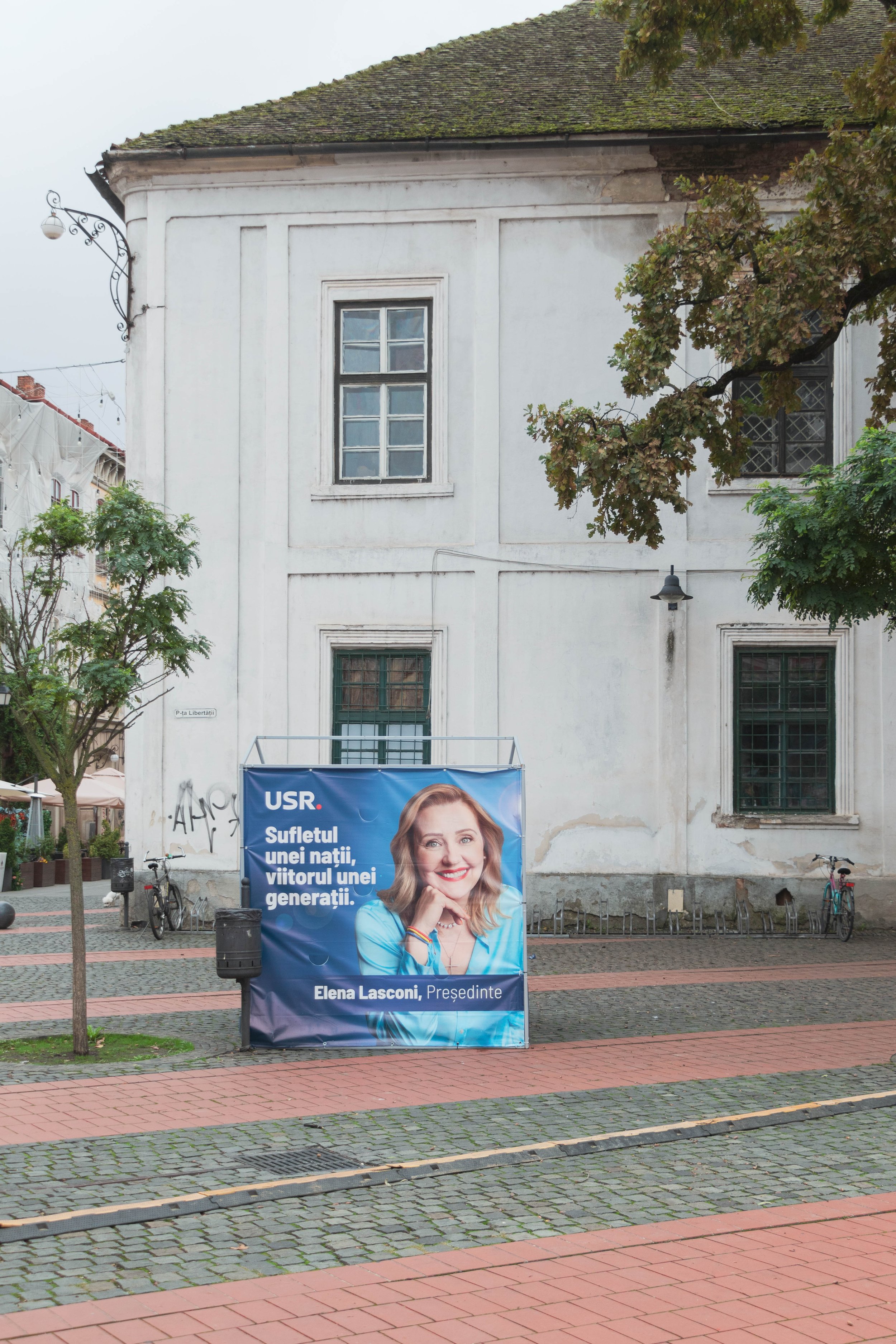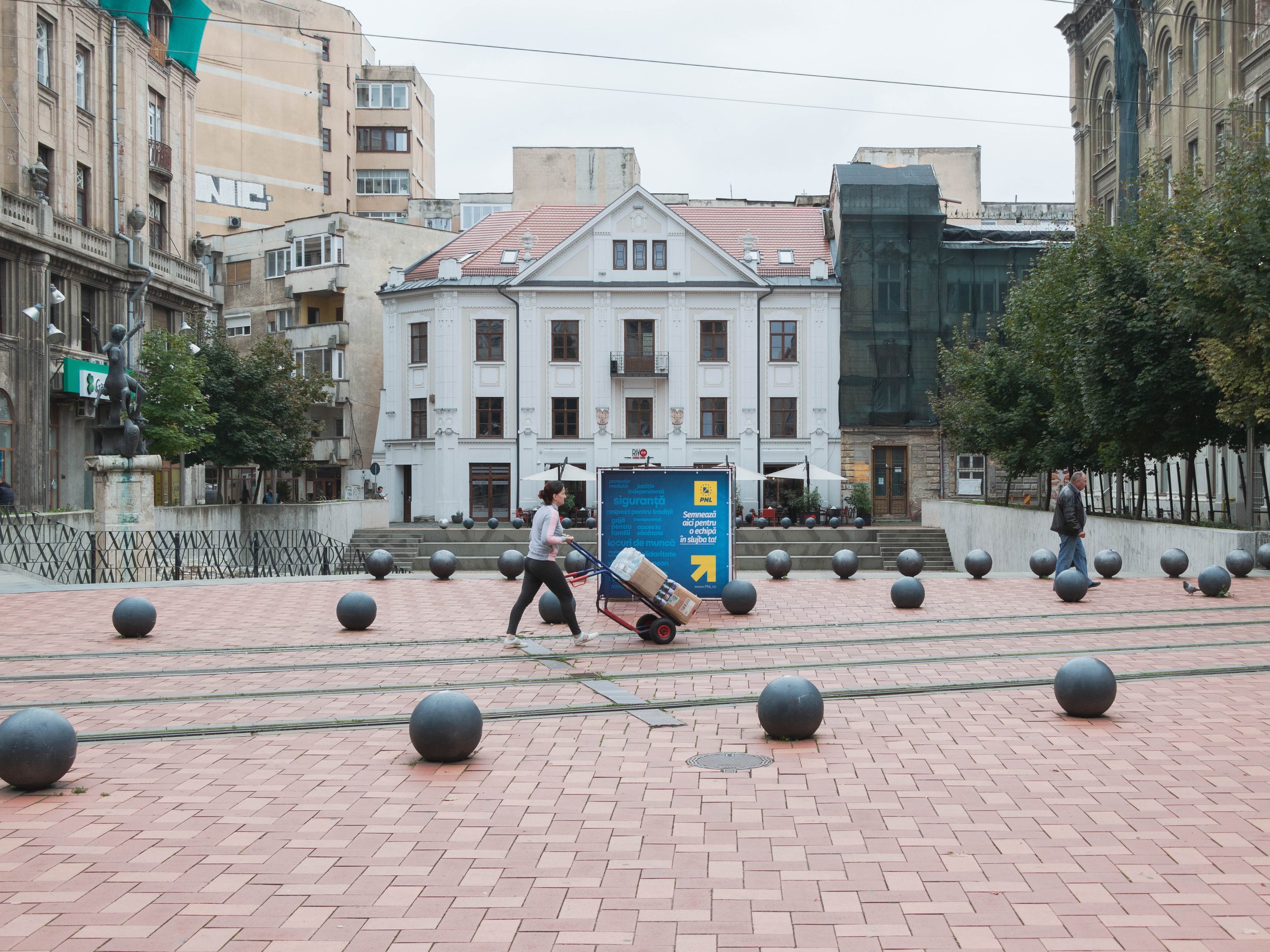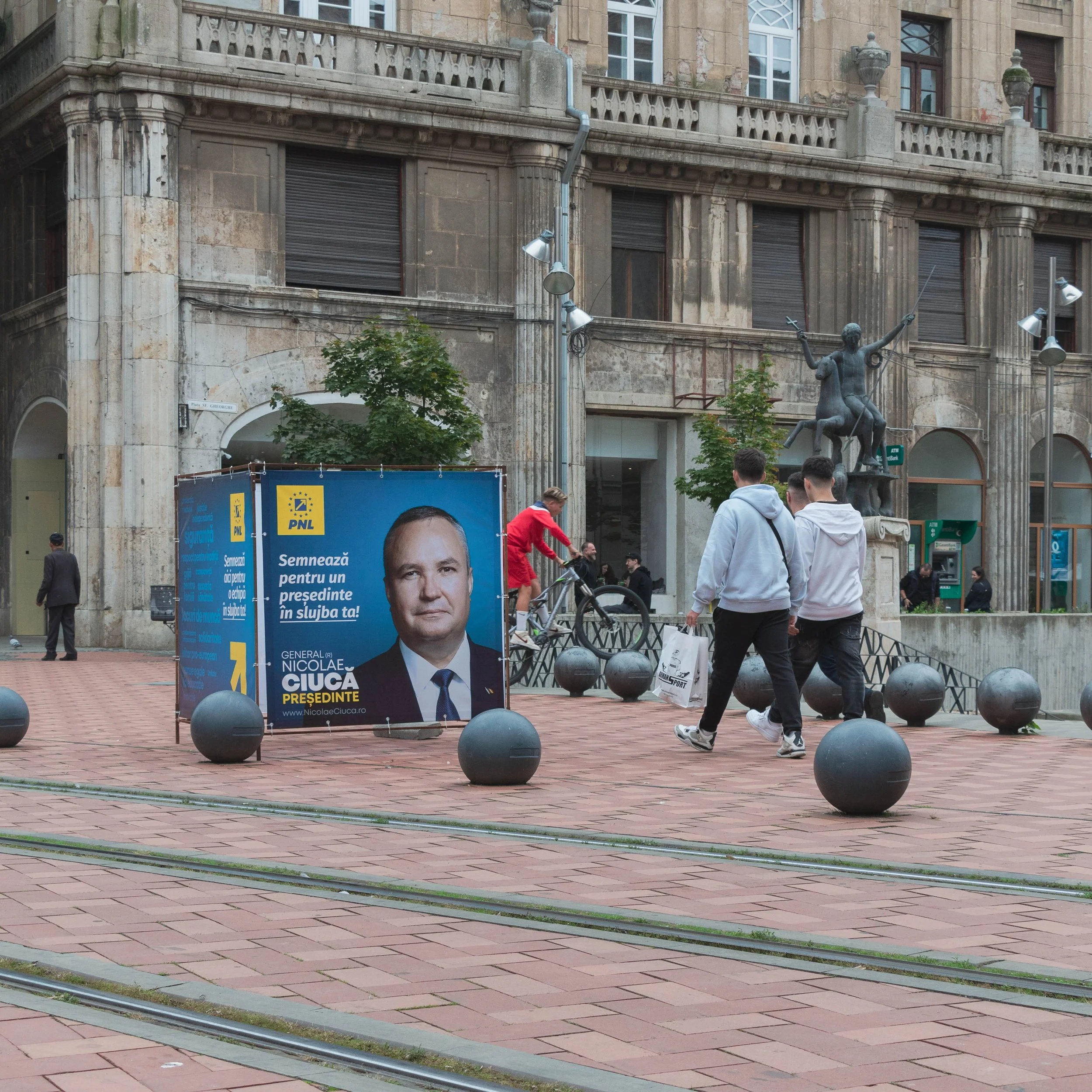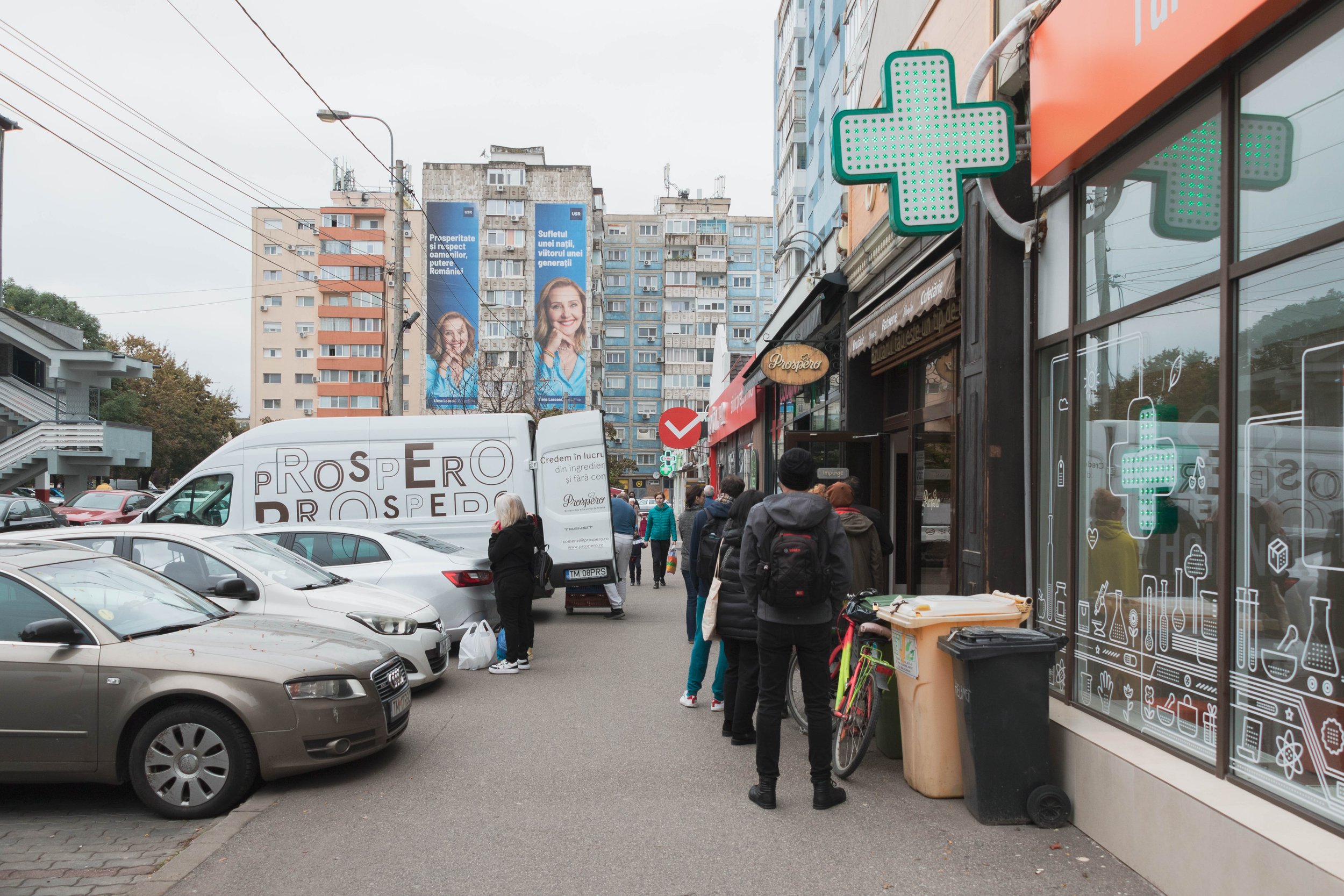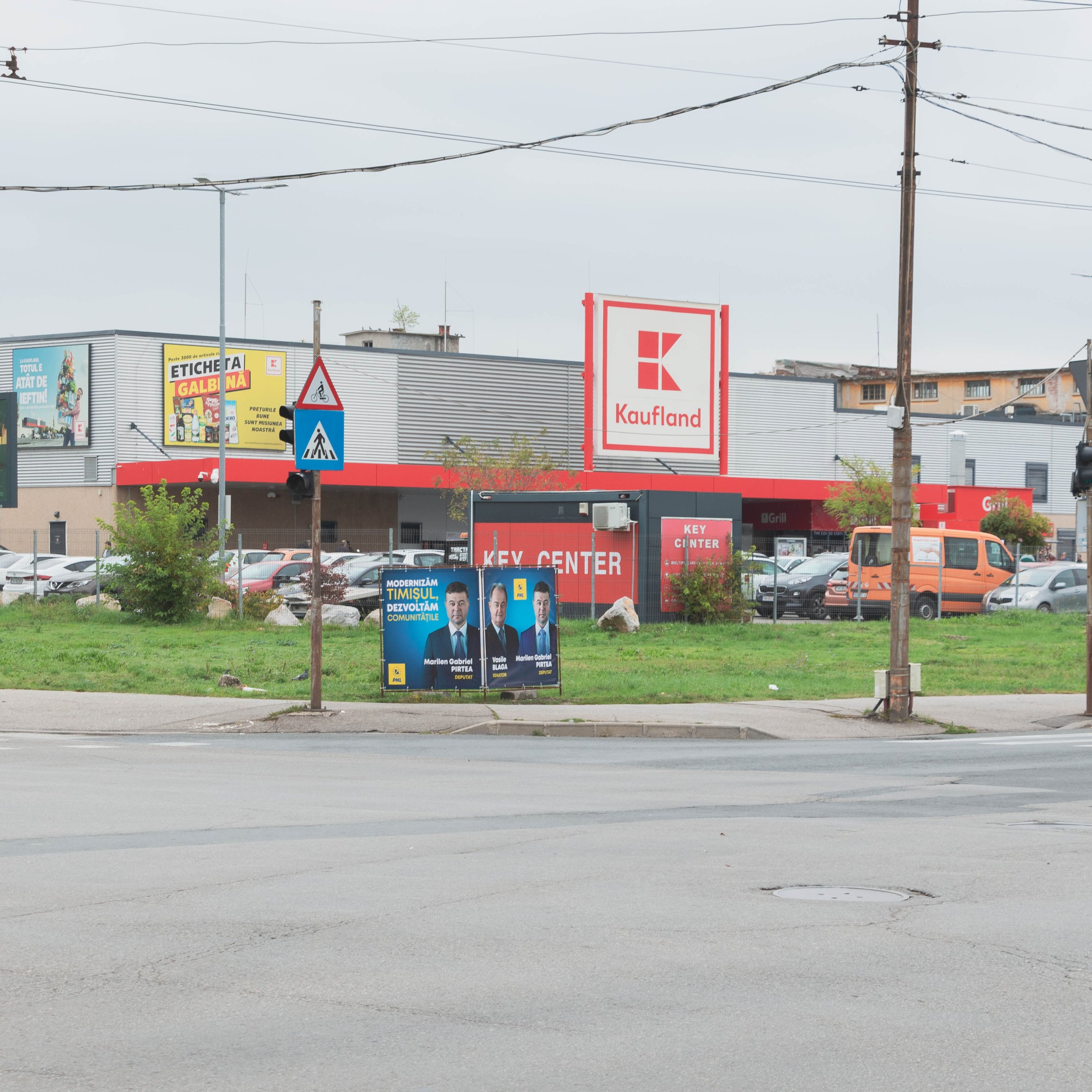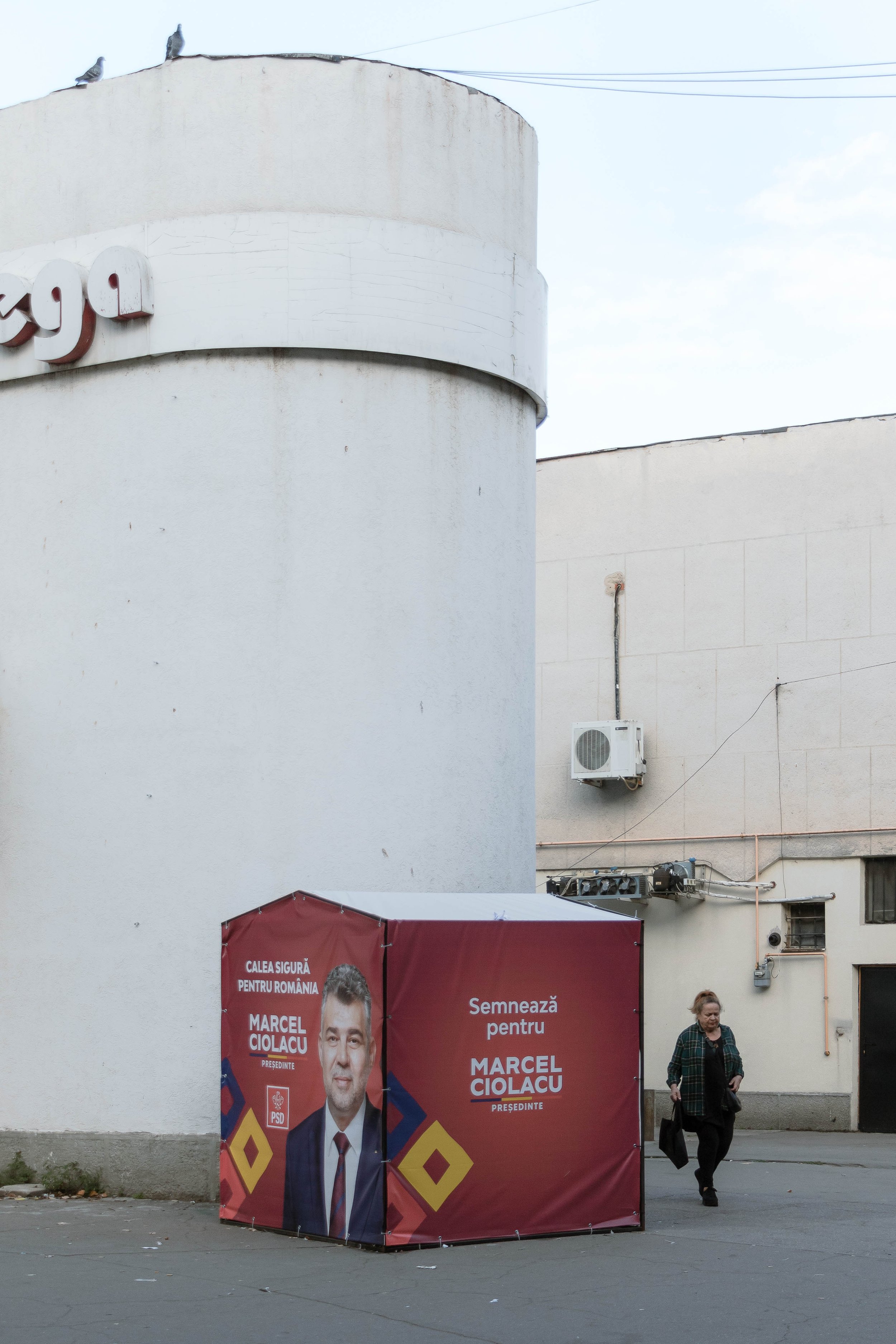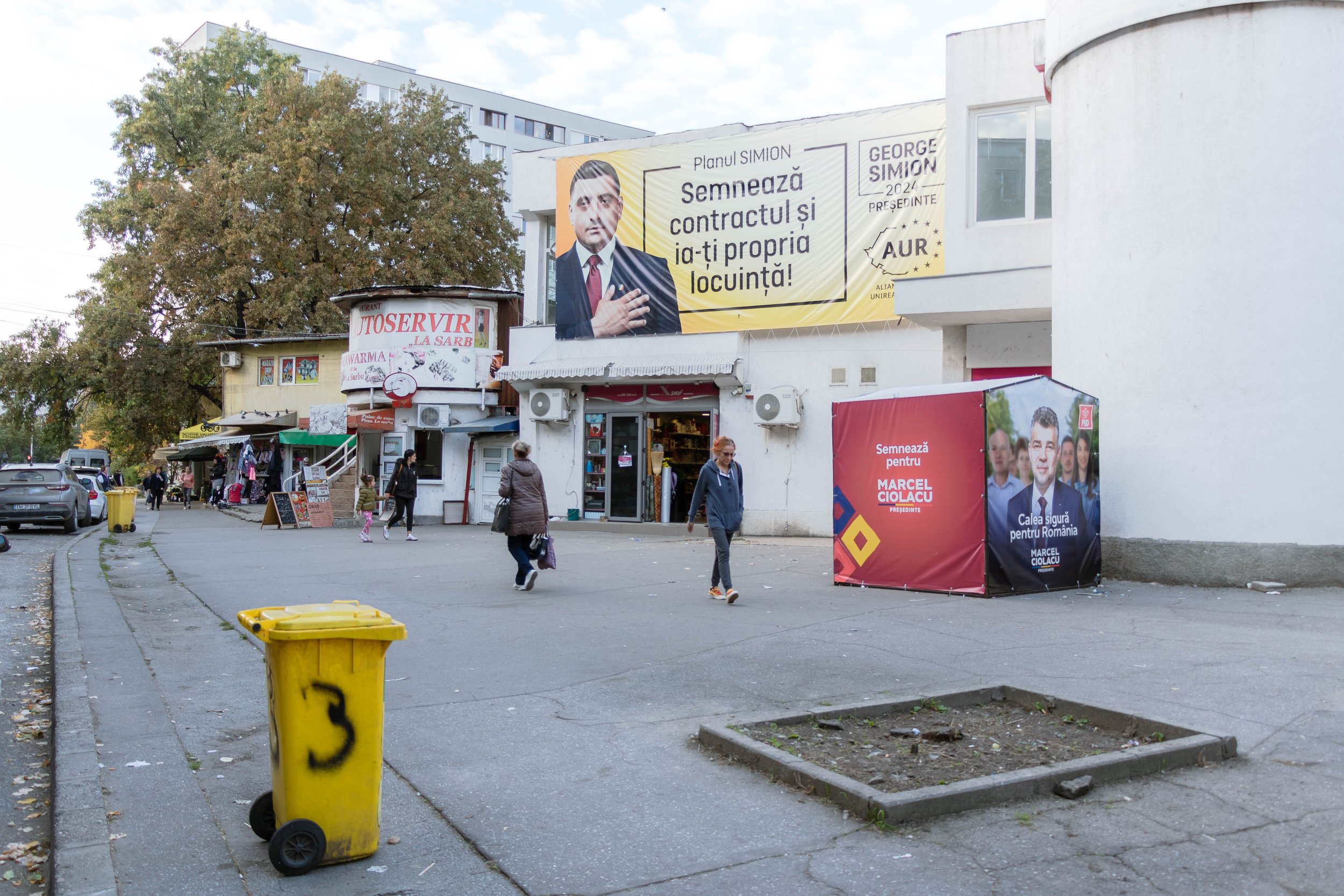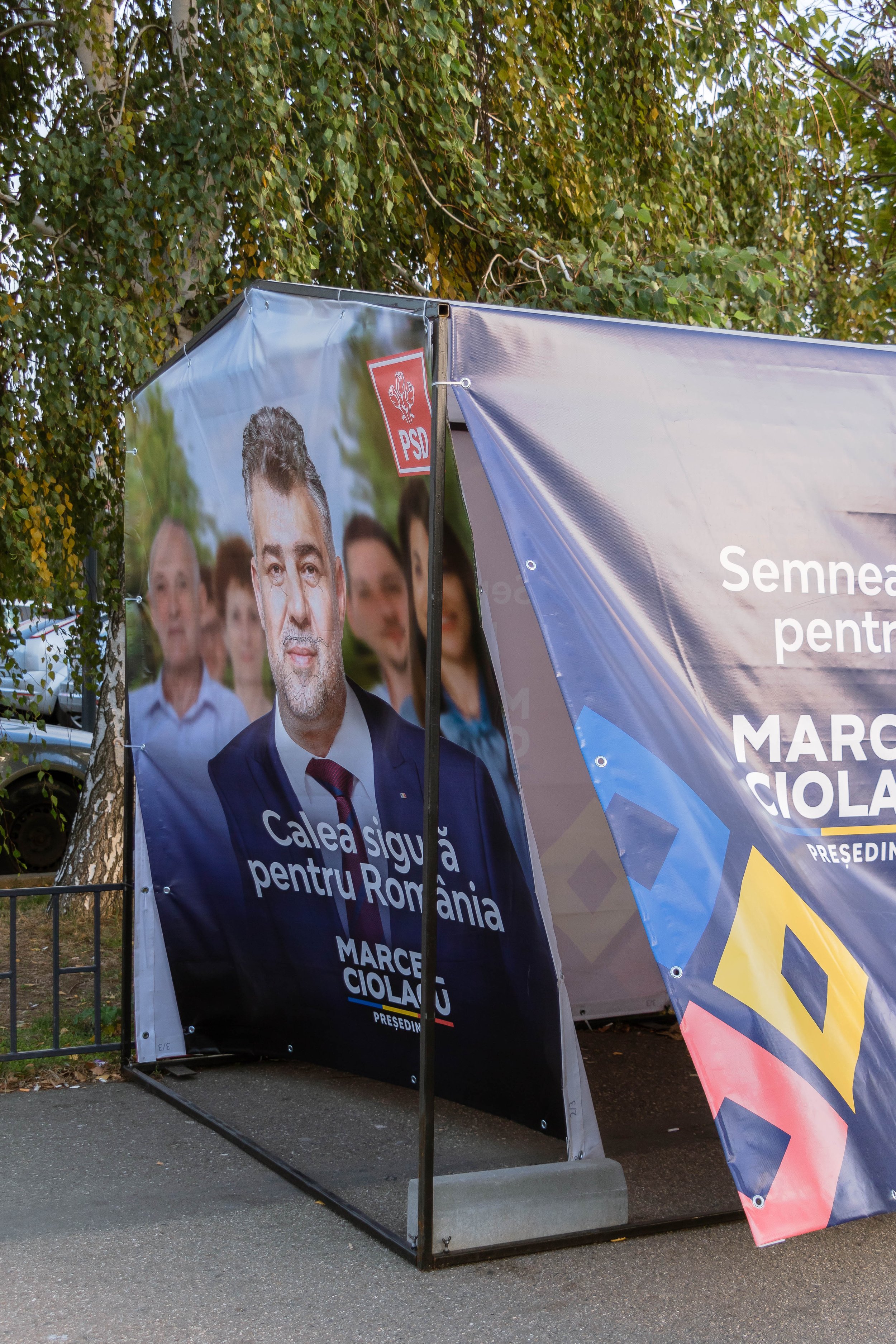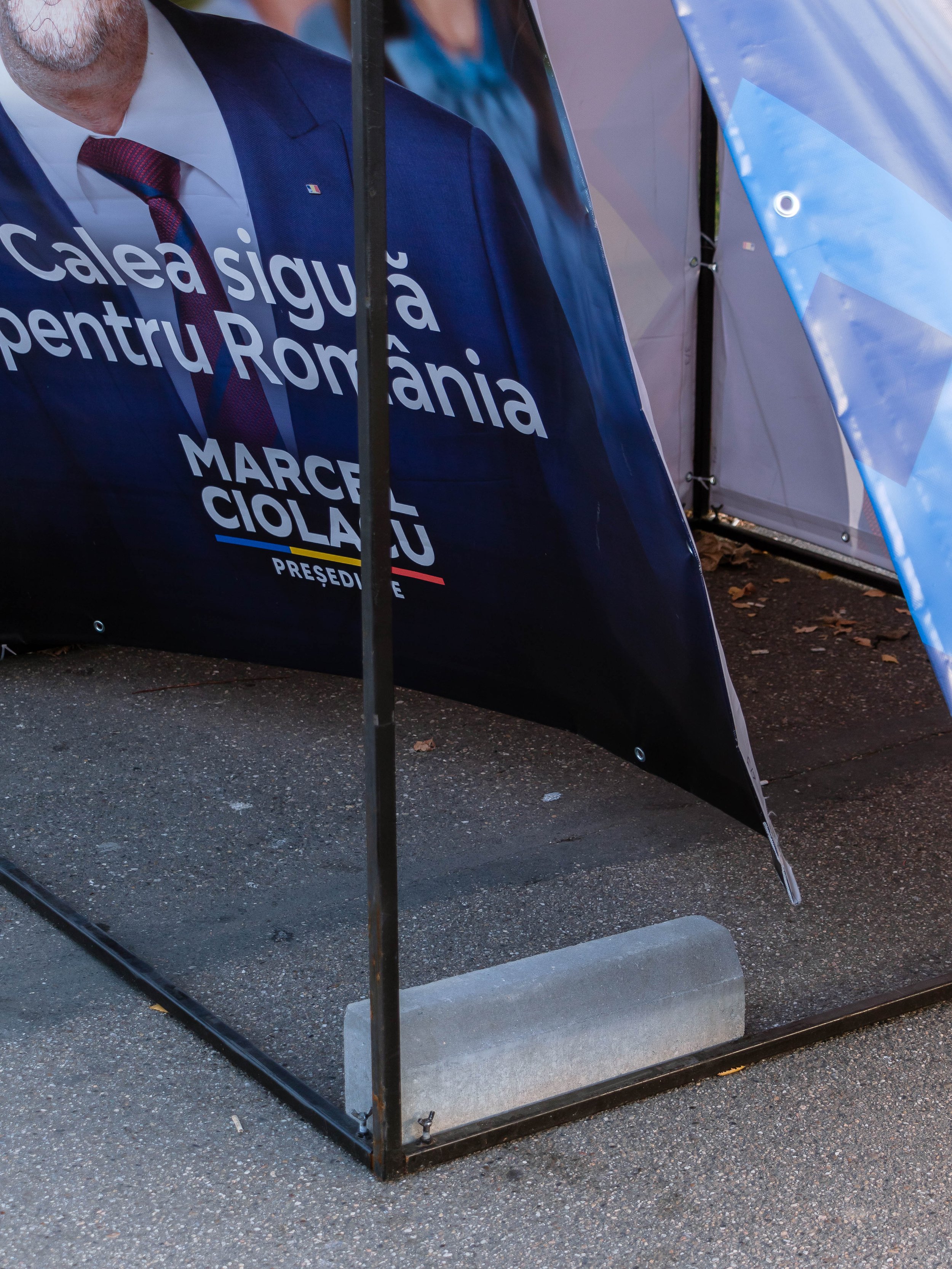
They’re present, right?
These past months, the faces of the presidential candidates have flooded the public space in Romania as part of the pre-election campaign to simulate the illusion that they are present in everyday life. This photography project documents the arbitrary and absurd way in which campaign materials were used in Timisoara to give politicians the visibility they wanted, often without regard for urban rules, functionality or the aesthetics of the city.
In order to bring the political slogans to the citizens, a mixture of pre-campaign materials were used at the city scale were used, such as banners on self-supporting structures -like tents- or attached to the facades of various buildings. The goal was to advertise better than the opponents. The campaign took place as a competition for either larger and more banners throughout the city. On the one hand, these objects felt meaninglessly scattered in public squares, and on the other, they were lost in the visual chaos and crowdedness of the neighbourhoods. When both types of advertising were placed in close proximity, the difference in size created a surreal, peculiar dialogue between them. However, the teams involved from each party members seem to be not the most qualified in decision making, also they lack a proper understanding of how public space should be used, a series of strange and comical situations arose.
text by Evelina Ursatii

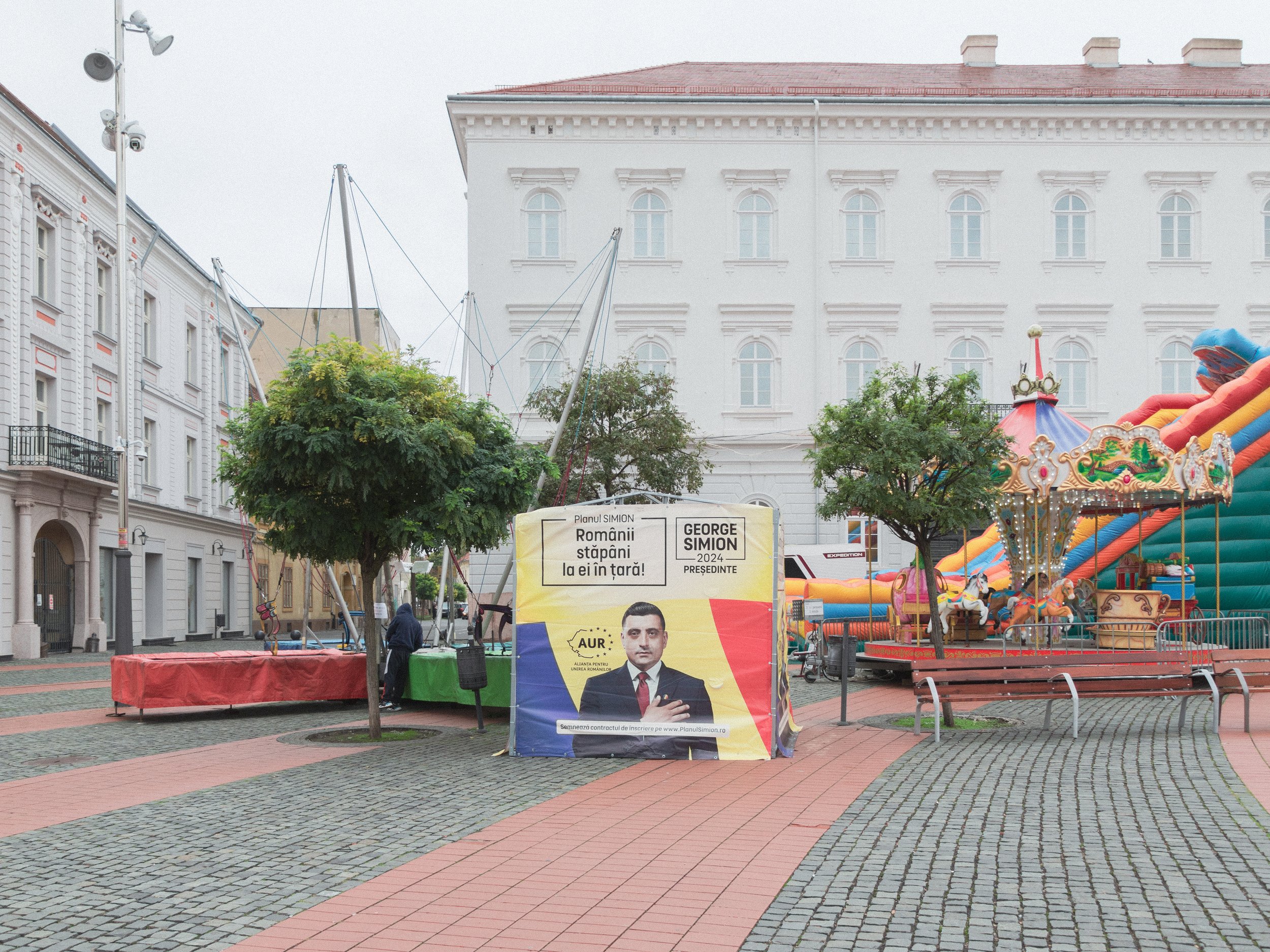
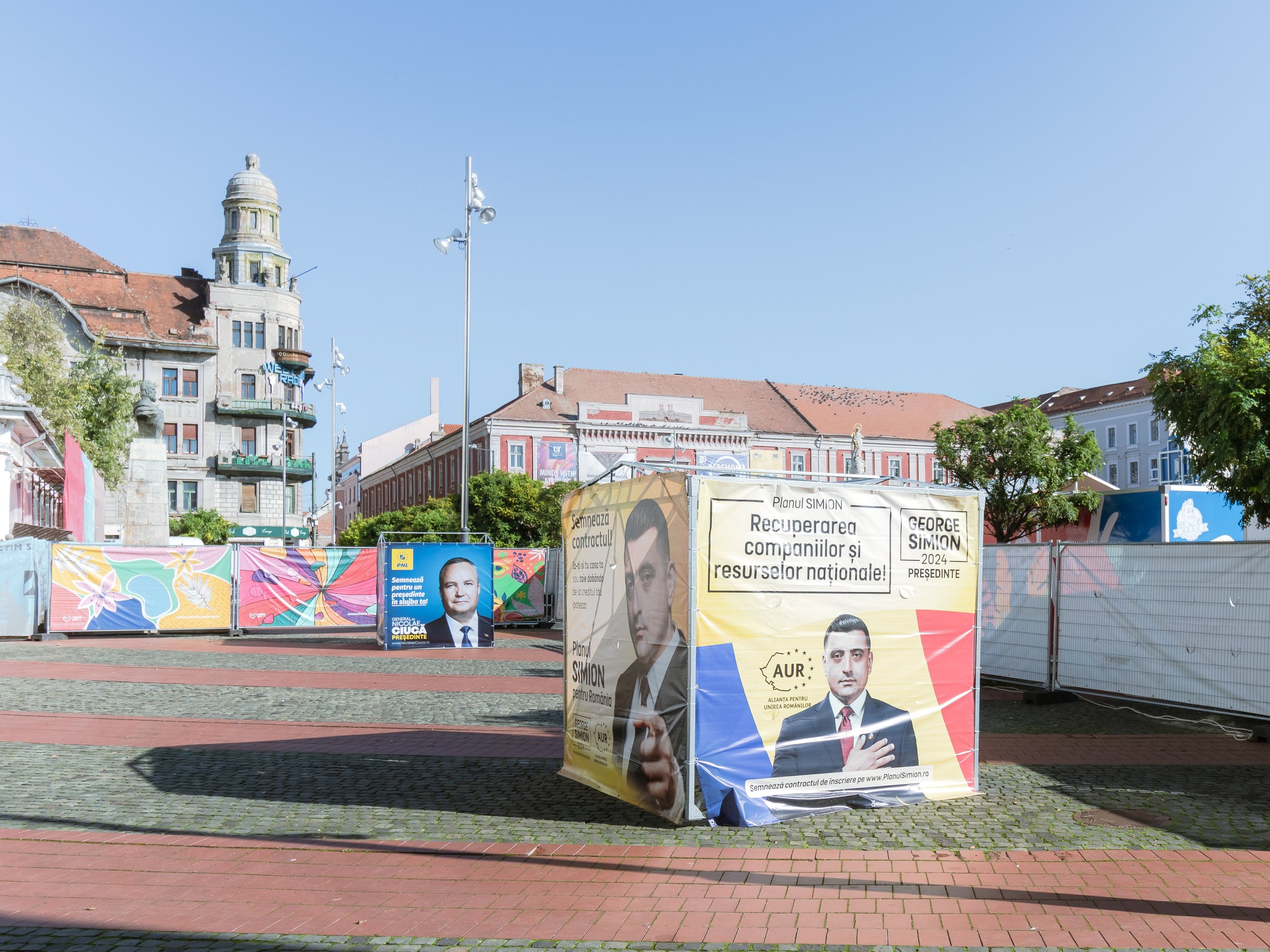
in Timisoara's vast public squares, the banners felt like random insignificant points in space, in contrast to the imposing built context. Most of the time, they were passed over by the public, but on many other occasions, they got moved around as if they were just obstacles.



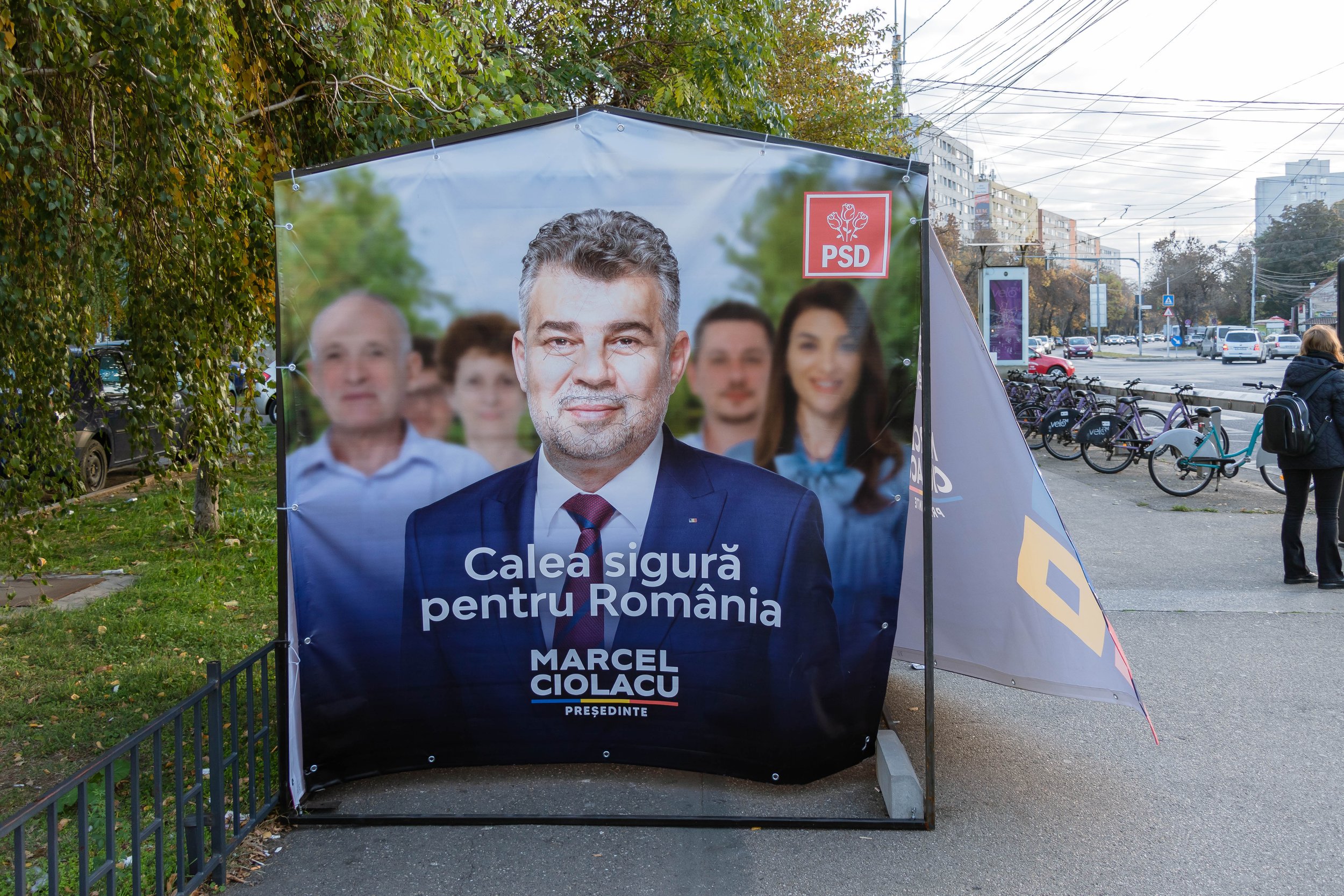

some even got vandalised - a more aggressive response from the public.


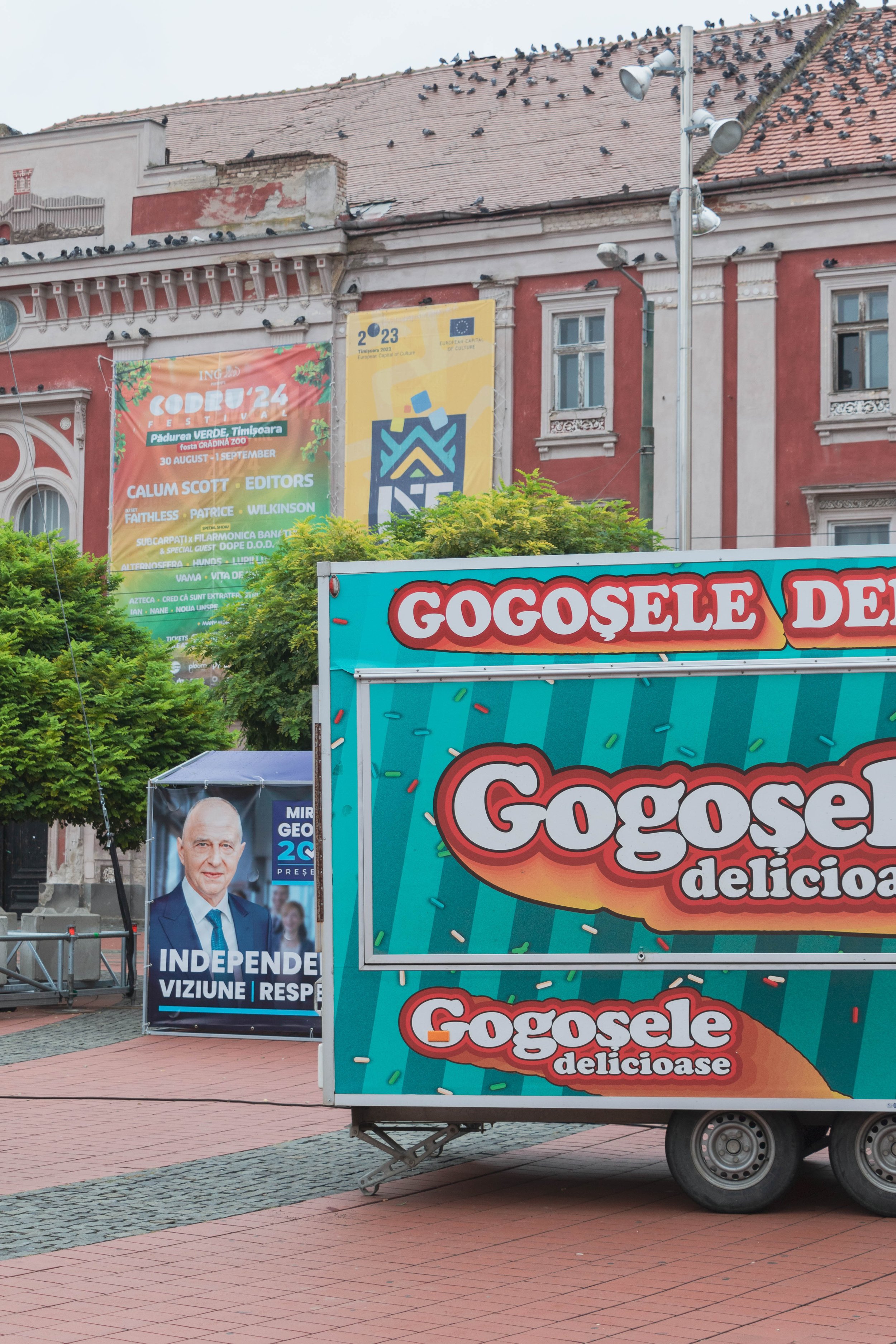




The absurdity of the arbitrary placement of banners was highlighted by the campaign tents accidentally becoming part of local festivals in the city squares. The politicians’ faces were looming through the food stalls selling doughnuts and waffles or appeared squeezed among children's attractions.
At times, the contrast between the polished political slogans of prosperity and the unfortunate urban realities they were placed in created unintentional moments of dark humour. In one case, a beggar was asking for money in a square directly nearby a campaign tent promising access to health, jobs and care for families.



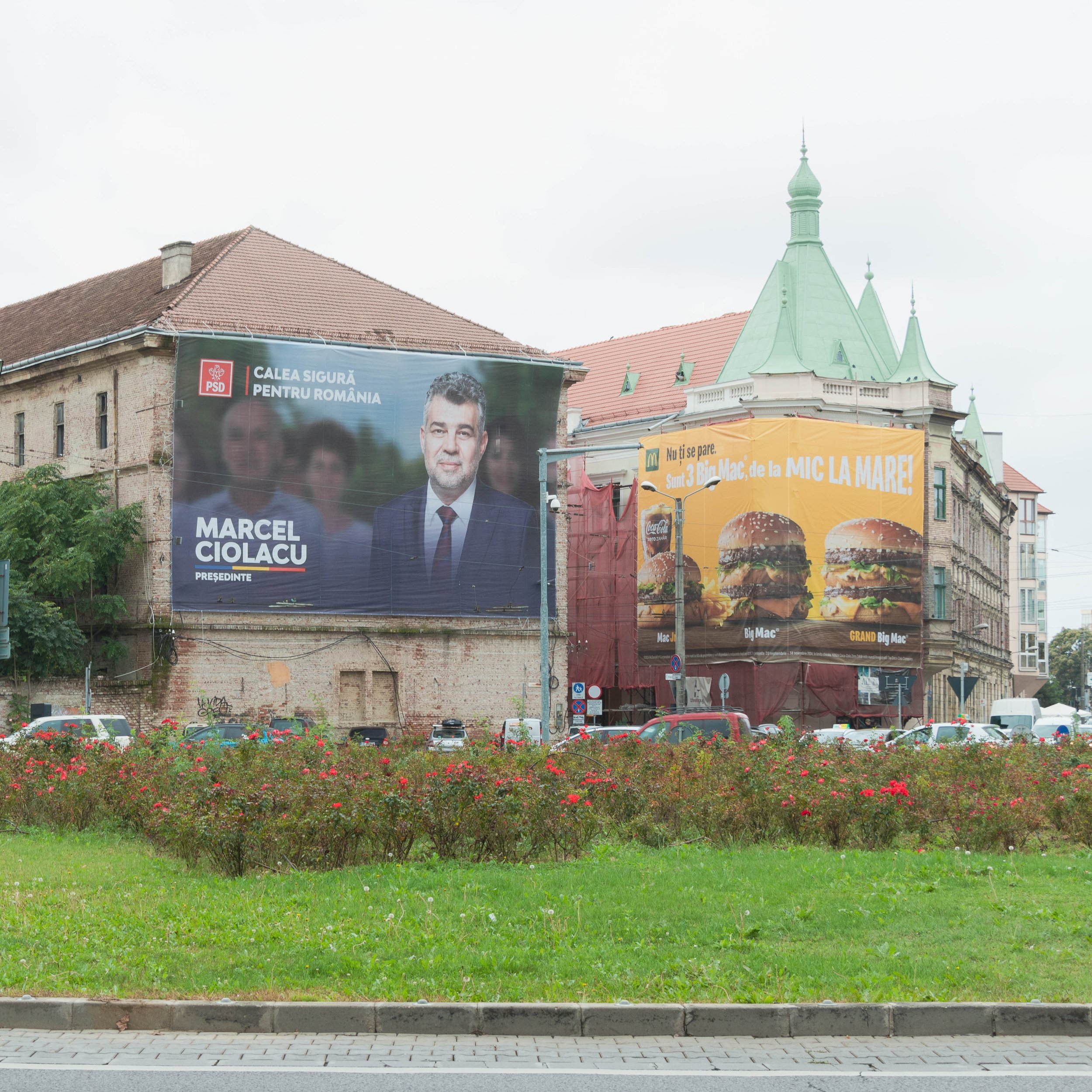
closeness with mcdonalad’s


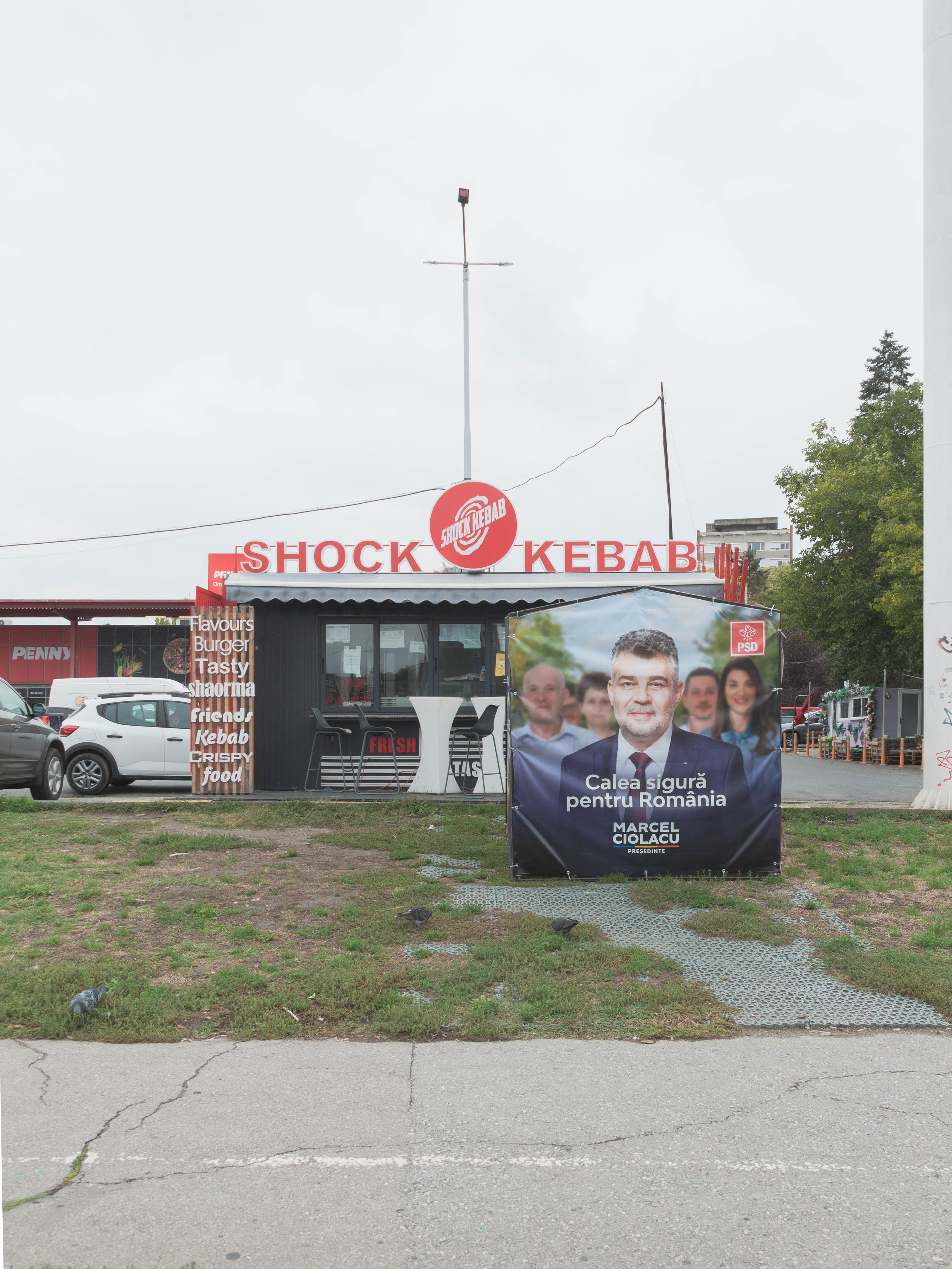



In some cases, the tents shared the space with some dumpsters or were placed in front of the shawarma serving trucks, stripping the promises of any credibility through this type of erroneous proximity. In one case, the same politician’s banner appeared twice on a single facade, as if the repetition itself would enhance the candidate’s importance.






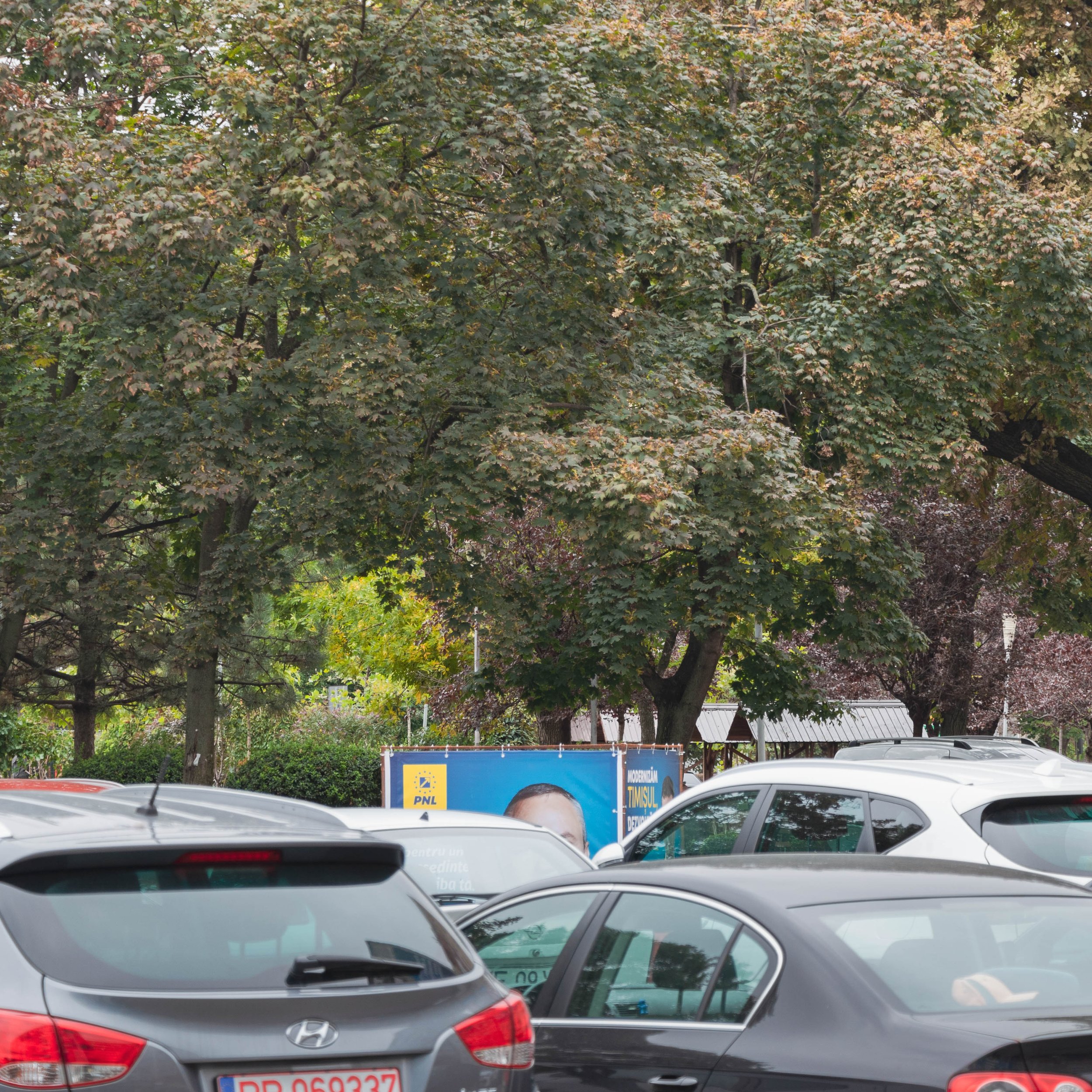

they were absorbed in the visual chaos and crowdedness of the neighbourhoods. When both types of advertising were placed in proximity, the scale difference created a surreal, peculiar dialogue between them. Uneducated, though, on the proper ways to use the public space, the party members were responsible for a range of strange and comical situations which happened.


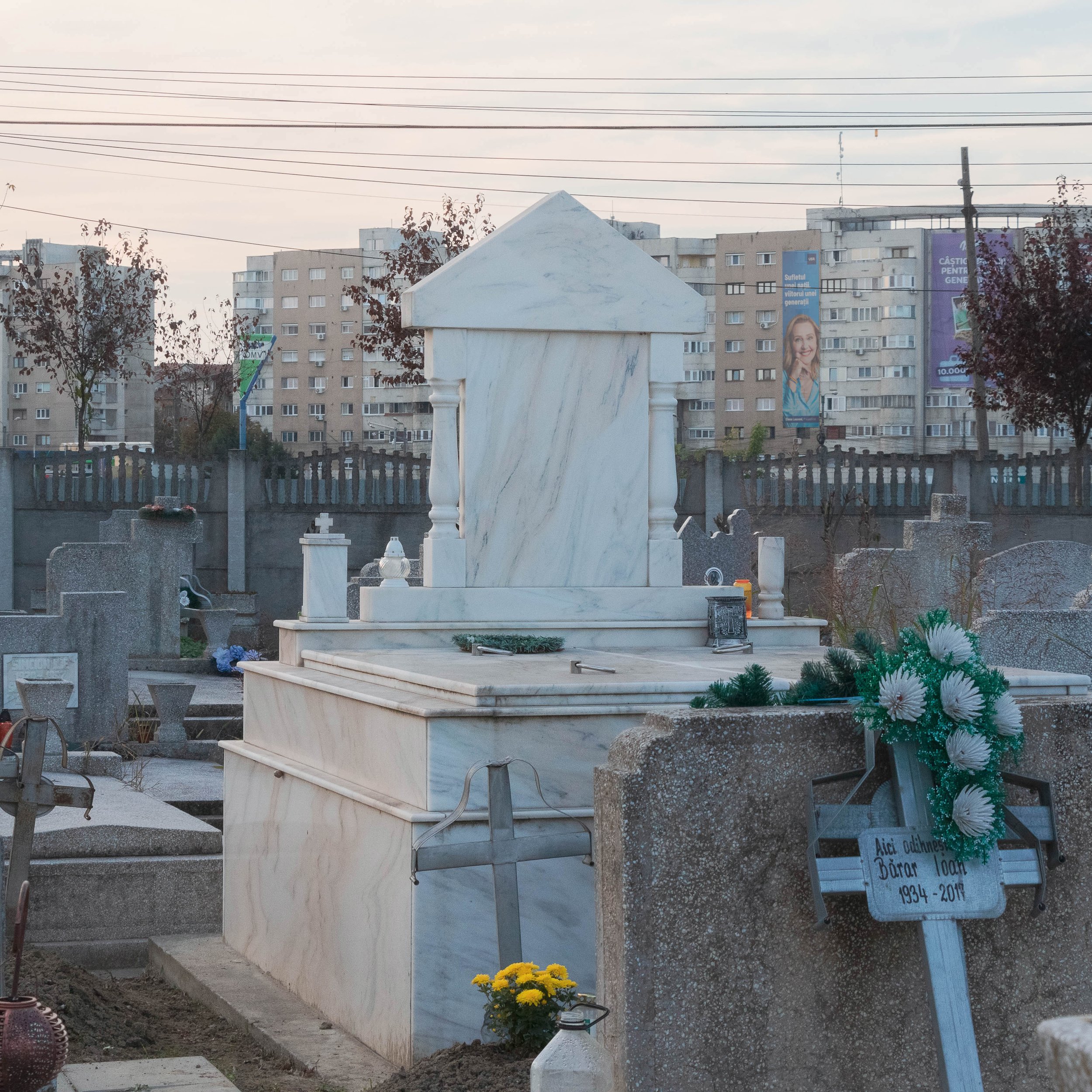


even in the cemeteries one cannot escape the politicians’ gaze


Perhaps one of the most unintentionally hilarious scenes was the sight of leftist party members' faces on a building facade, juxtaposed with nearby commercial advertising for a clothing store called “Lefties,” next to a circus tent, creating an ironic blend of political messaging and commercial kitsch.
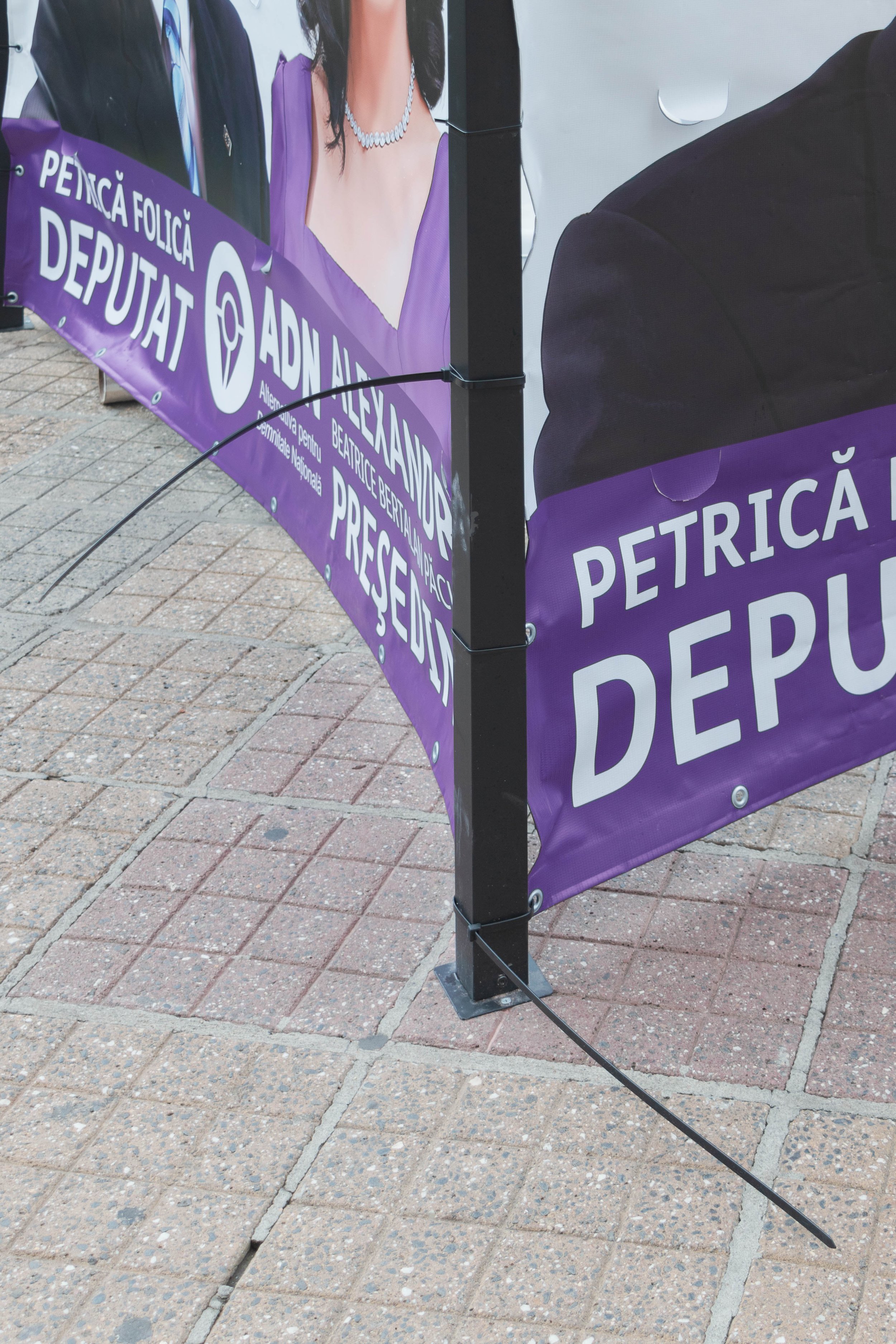

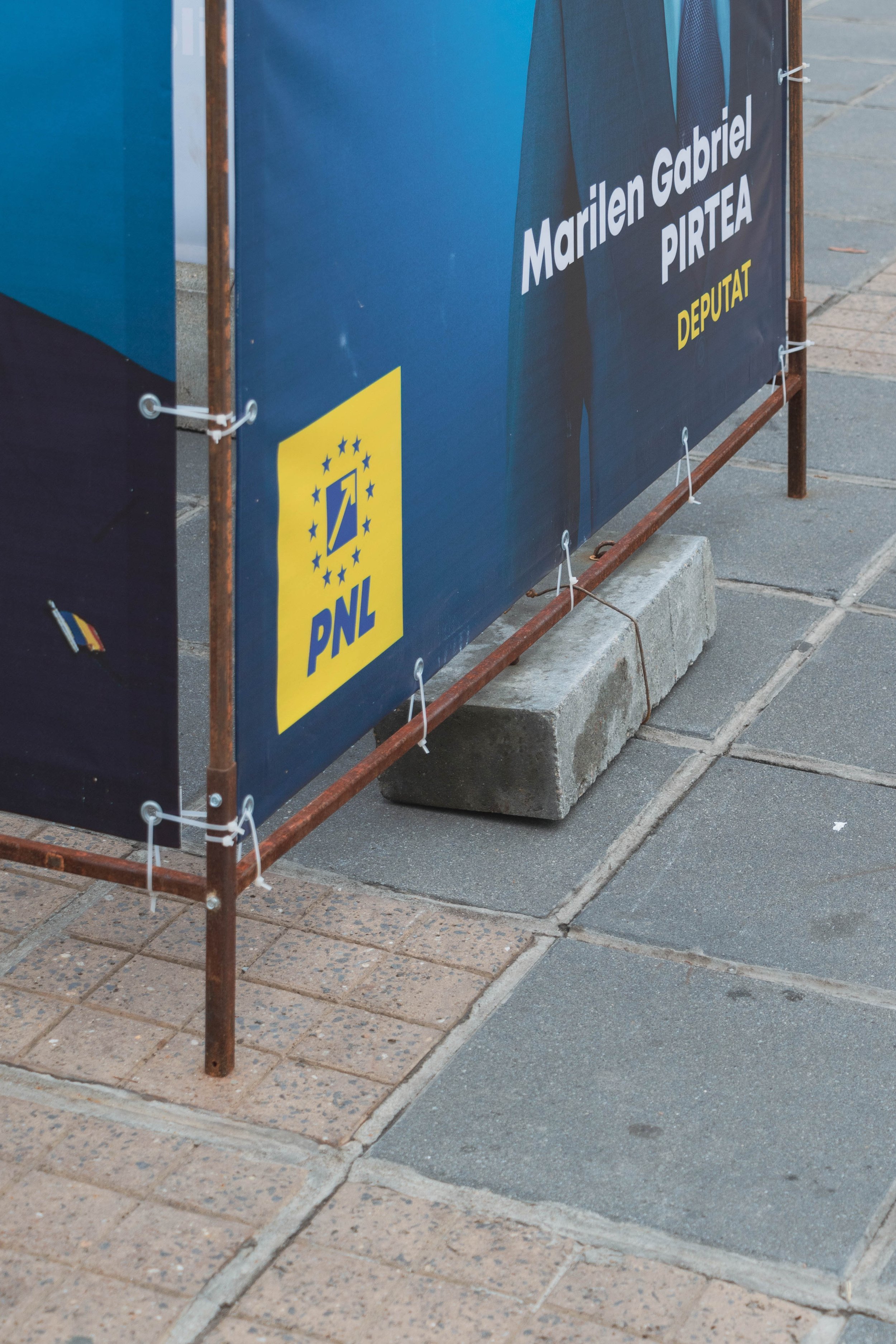



These types of absurd scenes emphasised that only the images were all that mattered. The actual structures behind the tents were flimsy and carelessly assembled, kept up by using sandbags, rocks, and zip ties. After the pre-campaign ended, many of these structures remained in public spaces for days, abandoned and denuded, with zip ties scattered on the ground. This careless disregard for the aftermath stressed how public space was only valued when it could be exploited for political gain, with no effort to maintain or respect it once the banners were no longer needed.
Through these photographs, this project does more than just document the banners themselves—it captures the absurdity of their presence in public spaces and the chaotic, often ridiculous, results of their placement. We are invited to question the real message behind political advertising and the extent to which the public space is recklessly transformed in the name of campaigning.
full set below
